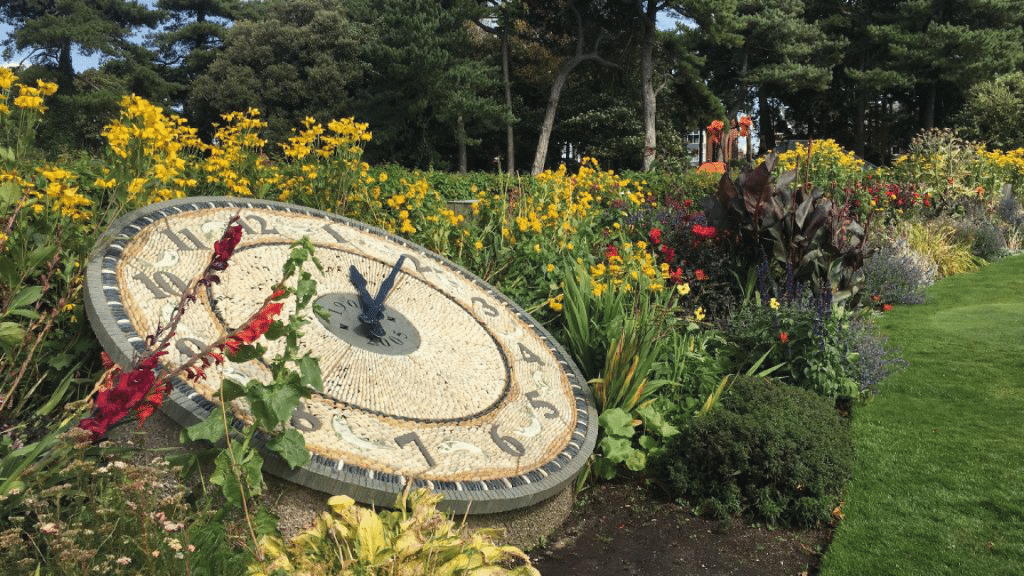Ahead of Lowther’s Garden Festival this weekend, we sat down to chat to Trevor, the current head of Lytham in Bloom, and asked about his experiences volunteering his time and effort up to keep Lytham looking lovely. Trevor has a background in medicine, but at one point in time had a career break to pursue a HND in Horticulture, which he now puts to excellent use for Lytham in Bloom. Trevor and his army of volunteers can often be seen out and about in Lowther Gardens and Lytham town centre, watering and caring for the many displays they’ve concepted, grown and cared for.
What is Lytham in Bloom and where did you get your roots from?
Lytham in Bloom is a volunteer group who, with the support of various organisations both local and national, keep the green spaces of the coastal town of Lytham looking lovely. They are a cohort of around twenty-five volunteers in charge of designing, maintaining, and changing allotted spots like the Floral Windmill and War Memorial in Lytham and the Herbaceous Border & Apothecary Gardens in Lowther. It is their 25th Anniversary this year and in their time together as a group they have achieved a lot with support by Britain in Bloom, the RHS and Fylde Council. The ‘in bloom’ initiative was started in 1963 by a man named Roy Hay MBE, a horticultural journalist, who went on holiday to France during the Fleurissement de France. He was enthralled with seeing the country overflowing with flowers, shrubs and trees all in bloom by order of the President of France at the time, President de Gaulle. He was so impressed he decided to bring the idea back to Britain and along with the British Tourist Agency, he set up the ‘In Bloom’ initiative and competition for towns to take part in (Bath was the first winner, in 1964!). The group has changed hands with support across the years, including the Tidy Britain Group and the Royal Horticultural Society.
Has it changed much since you’ve been at the helm?
The group has changed dramatically over the years, but especially recently with their ability to take on larger and more numerous projects. In the past, many of the local planters were run and managed by the council, but the group at the time felt as though they would be able to make them more attractive by tweaking the designs and being on hand to care for them. They asked to take over the management of the Memorial Gardens, with financial support from the council to purchase the plants and compost needed. Now they help to manage the Windmill, The Green Man, the Memorial Gardens, The Herbaceous Border, The Apothecary Garden, The Mussel Tanks and a few smaller planters.
Trevor wants to change the direction of the design in the future to focus more heavily on sustainable planting. In his opinion, people have to get used to the idea of more long term, naturalised displays that feature local varieties of plants, are easy to maintain and more supportive of wildlife. He offered the mussel tank as an example where this wildflower, seaside sustainable planting design has worked very well and still looks incredibly attractive.
Trevor spoke about how managing wildflower planting can still be a very complicated thing for the plants to thrive and be successful. Plants will regularly fight each other out for space in competition and some years previously successful plants will wither or lose their structure in the design. Planting smartly requires the knowledge of a botanist, and it can take a few years to see the results.
How was Lockdown for you?
Like most things, lockdown presented some challenges, but Trevor says he and the group were able to navigate them well and found their initiative was still able to work by keeping safe distances and adhering to guidelines as they came out. He said many people were vocally appreciative of the outside spaces they were working to keep going, even in the face of some projects being cancelled, like the Floral Windmill and the Green Man. In his opinion, they were able to achieve a lot and keep up the spirit of community in a time it was well needed.
What do you want people to know about LIB?
In Trevor’s opinion, Lytham in Bloom is a movement. It does a lot for the community outside of just maintaining spaces. They’ve recently had a very successful coffee morning; they regularly host demonstrations and talks. He likened them to be a bit like a football team with an army of supporters who have won the respect of their town. Such a large community driven effort has come with many accolades in the competitions they have been supported to enter. They were recently nominated to run in Britain in Bloom, with only 44 slots available across the entire country for the running. After the pandemic, Lytham in Bloom managed to maintain their Gold Award and won Best Small Coastal Resort. He is very pleased this year to say they have been approached by Northwest In Bloom to go to the national competition. Judging is on the 2 August and the 11 July for the Regionals. They enjoy close support from Fylde Council and were gifted a base for poly tunnels by Green Drive Golf Club. This established base of operations means Lytham in Bloom can better propagate their own plants, saving them both time and money.
Judging results are due to come at the award ceremony on 23 October. Trevor will announce how they’ve done in the papers and their active Facebook page, Lytham in Bloom.
Do you enjoy working the Lowther space?
Many of the Lytham in Bloom volunteers enjoy tending the space in Lowther Gardens, and many have had a direct hand in the preservation and uplift of the space. The Herbaceous Border is Trevor’s creative vision, drawing inspiration from cottage gardens. It was planted in 2005 and allegedly designed by Gertrude Jekyl, a famous British Horticulturist. However, herbaceous borders tend to fall into disrepair very quickly, with plants moving and fighting to grow in the limited space. He explained that sometimes the shape loses structure, so to combat this, he likes to use a perennial plant called Cardoon Grey. It has a thistle flower, beautiful colouring and presents a structural and architectural focal point in the sea of cottage wildflowers.
This year, Lytham in Bloom overhauled the border to reduce the size of invasive varieties and moved previously placed plants for more space and to better work together. He says he has tried very elaborate plants in the past, but they are very difficult to maintain, and he finds the native species work just as well and are better for the wildlife of the garden.
Another favourite in Lowther Garden is the Apothecary Garden. Spearheaded by Margaret and Tony Ashton, who were instrumental in approaching a local recycle company for funding to have the memorial restored and regilded. They both tended to the garden and planted things inspired by the nurses of WW1 who used local herbs for soldiers who had come back to the house next to Lowther to convalesce. Margaret and Tony were sponsored and supported by Lytham in Bloom to work their vision in several beds beside the Apothecary Garden over the years too.
All of us at the Lowther Pavilion are very grateful and want to give thanks to Lytham in Bloom for helping us and the Council to maintain our beautiful space to be the best it can be. Next time you see the Lytham in Bloom members out in their fluorescent jackets about the town, we hope you thank them too!
If you’re interested in what Lytham in Bloom get up to, follow them on their Facebook page for updates, or come and talk to them at Lowther’s Garden Festival at their stand. They will be selling Trevor’s propagated plants and plan to hold demonstrations over the weekend for potting and planting. We hope to see you there!


